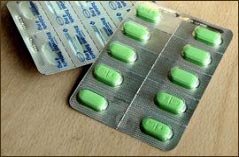Blister Packs Medication

Due
to intrinsic and extrinsic advantages, blister packs have surpassed plastic
bottles as the largest-selling group of pharmaceutical packaging products
worldwide. Advantages involving patient medication compliance, institutional
drug distribution efficiency, barrier protection, child resistance and
marketing appeal are expected to broaden growth opportunities for
pharmaceutical blister packs.
Combined global demand for these containers will grow 6.4 per cent annually
to $5 billion in 2007.
Western Europe is the biggest market for blister packs due to EU standards
requiring use in directly dispensed prescription drugs. Such requirements
are yet to be adopted by the US FDA. Demand for blister packs in China and
India are advancing rapidly.
Blister packs incorporate a relatively complex structure consisting of two
or more components. These components are sold separately, with the finished
container filled and assembled internally by end users or contract packaging
firms on high-speed equipment. The most widely employed pharmaceutical
blister pack consists of a multiple- compartment thermoformed plastic film
sealed to a flat backing made from one or more materials. Each compartment
is designed to hold a unit dose of medication.
Blister films serving pharmaceutical applications typically consist of two
or more layers. Polyvinyl chloride (PVC) is the most widely used resin for
the core layer based on cost, performance and processing advantages. PVC is
less prone to cause variances in the finished package than other high
barrier resins.


 Due
to intrinsic and extrinsic advantages, blister packs have surpassed plastic
bottles as the largest-selling group of pharmaceutical packaging products
worldwide. Advantages involving patient medication compliance, institutional
drug distribution efficiency, barrier protection, child resistance and
marketing appeal are expected to broaden growth opportunities for
pharmaceutical blister packs.
Due
to intrinsic and extrinsic advantages, blister packs have surpassed plastic
bottles as the largest-selling group of pharmaceutical packaging products
worldwide. Advantages involving patient medication compliance, institutional
drug distribution efficiency, barrier protection, child resistance and
marketing appeal are expected to broaden growth opportunities for
pharmaceutical blister packs.